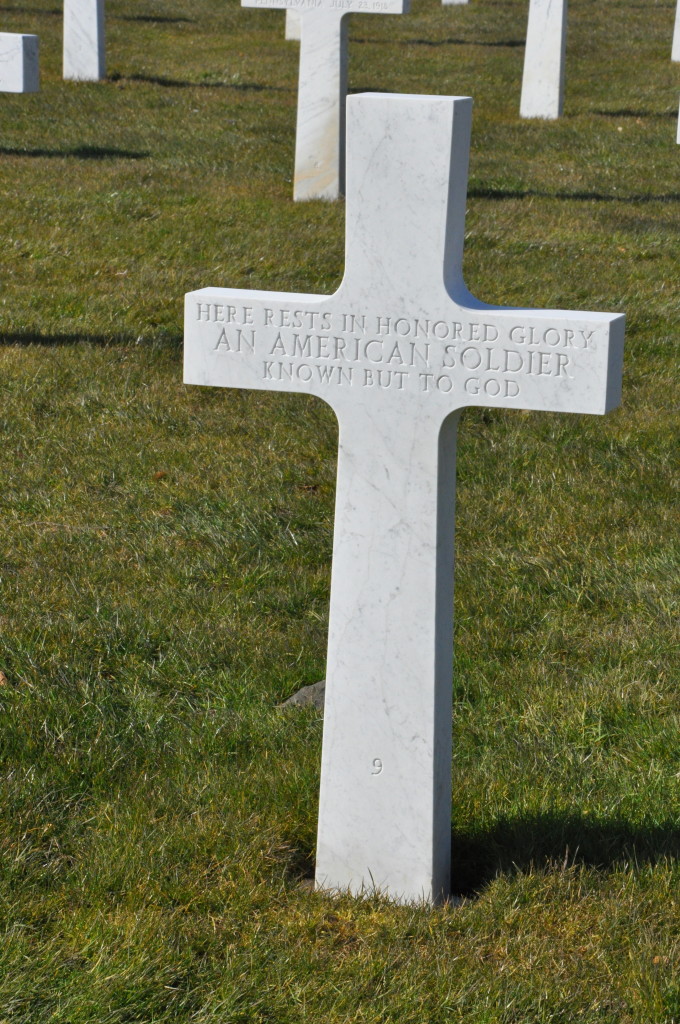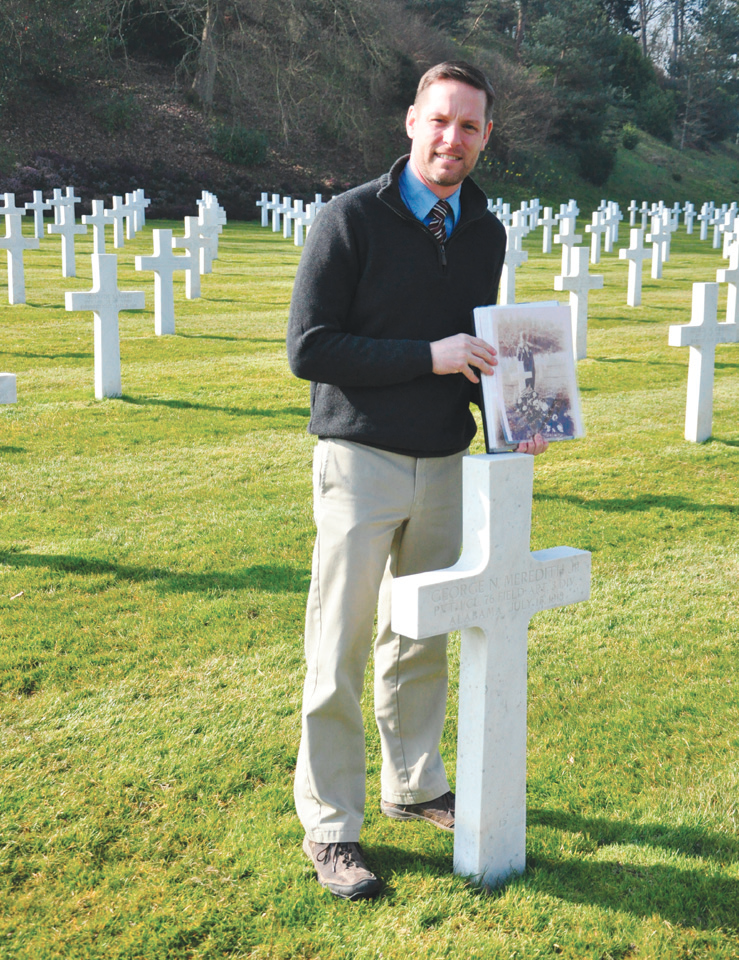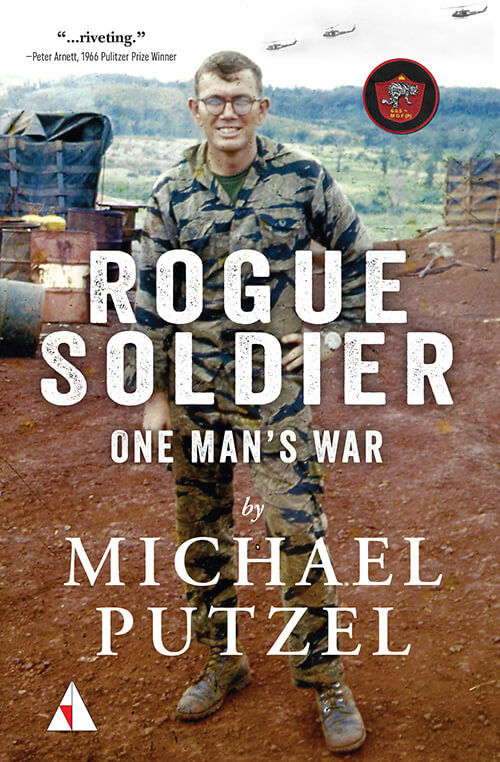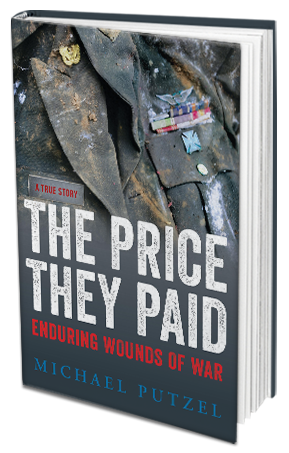Blog
To Americans who died in ‘The Great War’
Posted by • May 28, 2016

Note: The following guest blog first appeared in the Northern Dutchess News in Dutchess County, New York. Story and photos by jim donick
They called it “The Great War” or, more optimistically, “The War to End All Wars.” It was only after we became embroiled in another one that it simply became known as “World War I.”
In Europe today—especially in the Champagne region and along the slopes of the Chemin des Dames, France, where so much of the butchery took place—they still call it “The Great War.”
Memorial Day had actually begun after the American Civil War, but was pretty much confined to North America. World War I changed it entirely. This was the very first conflict where so many young Americans were called up and sent away to a foreign land to help protect the ideals that had formed our country.
Many of those young people were laid to rest in cemeteries near where they fell, such as those at Oise-Aisne and Aisne-Marne in France. With this war Memorial Day became a global experience for the United States, even for individuals here in the Hudson Valley. Some of our own sons and daughters are buried there.
There had been overseas excursions before, like the Spanish-American War and Gen. John Pershing’s efforts earlier in the century in what became known as the Mexican War.
This one, though, was different. The European powers had been at war since 1914 and any misconceptions they may have had about a short-lived conflict or about an easy and/or glorious victory were long dispelled by the time the United States entered the conflict.
Aside from a newfangled war in the air that had a degree of chivalry and romance to it, The Great War was anything but great, except, of course, in size and in the price that was paid. On the ground, this one was fought in muddy trenches and over a desolate “no man’s land” that came to be dominated by a relatively new weapon of war, the machine gun. We’ll leave the gas and other horrors for another time.
Into this grinder of young bodies came the United State of America. During the war, the U.S. mobilized more than four million military personnel and suffered 110,000 deaths, including 43,000 to the influenza pandemic.
Though officially neutral, the U.S. had been involved from the beginning in supplying the allies and had paid a price in the submarine war of the Atlantic. Additionally, a number of idealistic young Americans had gone to Europe to assist the effort. Most notable of these was the Lafayette Flying Corps, also known as the Lafayette Escadrille. These were the 200 or so who joined the French aviation effort.
By the end of the war, 68 of them were dead. Nearly 35-percent mortality is a pretty high price in anyone’s military. Wounded and captured would have been on top of that number.

AN AMERICAN SOLDIER
known only to God”
In April 1917 the United States dropped its neutrality and declared itself to be with the allies. Almost a year later, declaring “Lafayette, we are here,” the U.S. troops began arriving on French soil. On the “Eleventh Hour of the Eleventh Day of the Eleventh Month” of the following year, at least the fighting was over.
With the cessation of the fighting came a whole new set of challenges. Getting the surviving troops home was pretty much a replay of getting them over, only in reverse. More of a challenge was the question of the casualties. The U.S. had never lost so many so far from home. The dead had all been buried in temporary cemeteries near where they had fallen. Finding and identifying them was to become a massive effort. That was even before determining the final disposition of their remains. Would they be sent home to loved ones or buried in foreign soil?
Gen. Pershing and others understood that this was a more complex and difficult task than had been attempted in earlier U.S. conflicts.
By 1923, the American Battle Monuments Commission (ABMC) was established, and with it came the role of managing the problem. The military still had the issue of notifying next of kin and offering them the opportunity to have their loved ones’ remains shipped home for burial.
Almost 40 percent of them, though, decided that the dead should lie with their comrades. Some, the unidentified, didn’t have the same choice, but their remains, too, would remain in Europe.
Eight American Military Cemeteries were created, spread throughout the areas where the American troops had operated. In those cemeteries, they consolidated the various temporary cemeteries into facilities where the American dead could be honored and respected forever.
The ABMC still carries on that mission today and with the same passion and dedication they brought to the task more than 90 years ago. Next year will mark the centennial of the U.S. formally joining the effort and begins a more focused set of memorials. The various ABMC sites are getting prepared for that now.
When an American soldier was killed in battle, the family was notified as soon as was practical. The mothers of those soldiers were known as “Gold Star Mothers” and often put a gold star in the window of their homes or sewed one on their coats.
After the war, those mothers were offered the opportunity to be taken to France to visit the graves of their offspring.
In 1929 Congress enacted legislation that authorized the Secretary of War to arrange for pilgrimages to the European cemeteries “by mothers and widows of members of military and naval forces of the United States who died in the service at any time between April 5, 1917, and July 1, 1921, and whose remains are now interred in such cemeteries.”
By Oct. 31, 1933, when the project ended, 6,693 women had made the pilgrimage. The stories of some of those women and their pilgrimages are kept alive today in the cemeteries they visited.
One of them, the mother of George N. Meredith, came all the way from Anniston, Alabama, to find the grave of her son in the Aisne-Marne cemetery. The superintendent there, Shane Williams, is now the one who tells her story. The stories of the families are at least as important to the memory as the stories of the soldiers.

Williams said that one of the challenges and rewards of the job is found in getting to know the people for whom he is now responsible.
“I sometimes just walk out here among the headstones and imagine them,” he said. “On a hard day, that puts the whole job back in perspective.”
Aisne-Marne lies at the foot of the hill called “Belleau Wood.” That’s the place where the United States Army and a regiment of United States Marines stopped a major German offensive. That hill has become sacred ground to the Corps. Looking after that memorial is also the responsibility of Williams and his staff at the cemetery.
The men and women buried in the World War I cemeteries, like the ones buried in the World War II cemeteries, are a cross-section of the society and represent all economic strata of the time.
President Theodore “Teddy” Roosevelt had sons die in both conflicts, Theodore Roosevelt Jr. in the Second World War and his younger brother, Quentin, a pilot, killed in France on Bastille Day in 1918. The latter was moved to the World War II Cemetery in Normandy after that war to lie next to his brother. In the intervening years, he lay not far from Chateau Thierry. There are a number of memorials to him scattered throughout that area.
One of the greatest American poets/writers of the period, Joyce Kilmer, lies less than a mile from where he fell. Likened by some to the great British writer G.K Chesterton, he is buried in the Oise-Aisne Cemetery. The superintendent there, Geoff Fournier, can stand near his grave and point out the location of the farm where he fell.
Kilmer was a sergeant in the regiment known as “The Fighting 69th.” The 69th, along with the storied “Harlem Hell Fighters,” an African-American regiment, are among the most honored of the New York-based regiments.
Kilmer, a well-educated man, had been given the opportunity several times during his service to be commissioned an officer, but always declined. He said he’d rather be a sergeant in the 69th than an officer anywhere else.
Kilmer’s funeral in Europe was conducted by his chaplain, Father Francis P. Duffy. Duffy, himself, became the most highly decorated chaplain in the history of the armed services. He survived the war. His statue stands today in Times Square in that area known as “Father Duffy Square.”
The cemeteries are not only the resting places of men. Nurse Felicita Hecht is buried in Oise-Aisne. Hecht was a widow with children. She became a nurse and joined the army to ensure there would be money coming in for them.
Leaving the kids in the care of some nuns at the hospital where she had trained, she embarked for Europe. Nurse Hecht came down sick sometime after her arrival. Having already survived the flu during the great pandemic, the nature of her illness was a quandary.
She died there, though. The cause was breast cancer. That isn’t what might be expected in a military cemetery, but it is exactly what one should expect in any cemetery holding Americans from all walks of life.
The cemeteries not only hold the identified remains of Americans, but also the remains of those who were not able to be identified.
In Oise-Aisne there is even one non-American. An unidentified Frenchman lies there among his allies. For those who went missing and were never found or identified there are the walls of honor, listings engraved in stone giving names, military units and state where they joined the service. The lists are long, even today, but the staffs of the ABMC continue to try to find the missing. When the remains are identified, maybe in a long-forgotten shell hole, a local cemetery or, sometimes, buried at home, then a rosette is put into the wall next to their name to indicate that, at long last, the missing has been found.
That search for the missing and the commitment to preserving the memories of all of the war dead is considered by the ABMC officials as an almost sacred trust. The war dead are different from the veterans who came home to tell the tale and to enjoy parades and honors and to watch their families grow.
Tim Nosal, the chief of external affairs for the commission, sums up the difference succinctly when he says, “the war dead never got the chance to be veterans.”
“Memorial Day is about them.”






